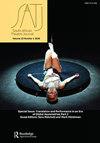The Line: committing and commemorating ‘the crime without a name’
IF 0.2
0 THEATER
引用次数: 1
Abstract
This article analyses Gina Shmukler’s verbatim play The Line (2012) and argues for another look at the testimonies captured from witnesses, survivors and perpetrators of the violence targeting foreign and perceived as foreign persons in South Africa that escalated in 2008 and in 2015. It is a narrative analysis of the play that uses Gregory H. Stanton’s Ten Stages of Genocide model and the United Nations Convention on Genocide to investigate the theatrical representation of the violence. This account argues that the events that are captured in the play and that inspired it should be reconsidered as acts of genocide. In the absence of an official acknowledgement of the events as genocide, performances like The Line and other ‘xenophobia’ plays entomb what Winston Churchill called ‘a crime without a name’ (1965). The article argues that performance stands as the public yet ephemeral and embodied commemoration of the trauma of genocide violence, filling the void of the absent murals and museums that are often a built-in commemoration of past and contemporary trauma.台词:犯下并纪念“没有名字的罪行”
本文分析了吉娜·什穆克勒(Gina Shmukler)的逐字逐句剧本《界线》(The Line)(2012),并主张重新审视2008年和2015年南非针对外国人和被视为外国人的暴力事件的目击者、幸存者和肇事者的证词。这是对该剧的叙事分析,使用格雷戈里·H·斯坦顿的《种族灭绝的十个阶段》模型和《联合国种族灭绝公约》来调查暴力的戏剧表现。这篇报道认为,剧中捕捉到的事件以及激发它的事件应该被重新考虑为种族灭绝行为。在没有官方承认这些事件是种族灭绝的情况下,像《火线》和其他“仇外心理”这样的表演掩盖了温斯顿·丘吉尔所说的“没有名字的罪行”(1965年)。文章认为,表演是对种族灭绝暴力创伤的公开但短暂的具体纪念,填补了壁画和博物馆的空白,这些壁画和博物馆往往是对过去和当代创伤的内在纪念。
本文章由计算机程序翻译,如有差异,请以英文原文为准。
求助全文
约1分钟内获得全文
求助全文

 求助内容:
求助内容: 应助结果提醒方式:
应助结果提醒方式:


